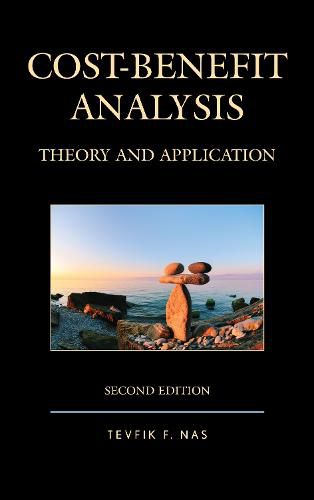Readings Newsletter
Become a Readings Member to make your shopping experience even easier.
Sign in or sign up for free!
You’re not far away from qualifying for FREE standard shipping within Australia
You’ve qualified for FREE standard shipping within Australia
The cart is loading…






Drawing on the principles of welfare economics and public finance, this second edition of Cost-Benefit Analysis: Theory and Application provides the theoretical foundation for a general framework within which costs and benefits are identified and assessed from a societal perspective. With a thorough coverage of cost-benefit concepts and their underlying theory, the volume carries the reader through the steps of a typical evaluation process, including the identification, measurement, and comparison of costs and benefits, and project selection. Topics include alternative measures of welfare change, such as the concepts of consumer surplus and compensating and equivalent variation measures, shadow pricing, nonmarket valuation techniques of contingent valuation and discrete choice experiment, perspectives on what constitutes a theoretically acceptable discount rate, the social rate of time preference, income distribution, and much more. The book also focuses on real-world applications of cost-benefit analysis in two closely related areas-environment and health care-followed by an examination of the current state of the art in cost-benefit analysis as practiced by international agencies.
$9.00 standard shipping within Australia
FREE standard shipping within Australia for orders over $100.00
Express & International shipping calculated at checkout
Drawing on the principles of welfare economics and public finance, this second edition of Cost-Benefit Analysis: Theory and Application provides the theoretical foundation for a general framework within which costs and benefits are identified and assessed from a societal perspective. With a thorough coverage of cost-benefit concepts and their underlying theory, the volume carries the reader through the steps of a typical evaluation process, including the identification, measurement, and comparison of costs and benefits, and project selection. Topics include alternative measures of welfare change, such as the concepts of consumer surplus and compensating and equivalent variation measures, shadow pricing, nonmarket valuation techniques of contingent valuation and discrete choice experiment, perspectives on what constitutes a theoretically acceptable discount rate, the social rate of time preference, income distribution, and much more. The book also focuses on real-world applications of cost-benefit analysis in two closely related areas-environment and health care-followed by an examination of the current state of the art in cost-benefit analysis as practiced by international agencies.